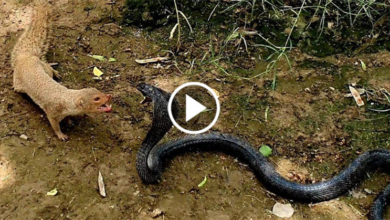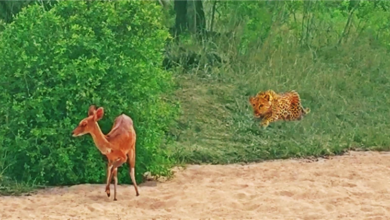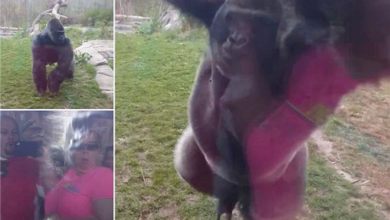Greedy thinks that turtles can easily attack, snakes hides their heads in turtle shells to attack and a memorable end for it
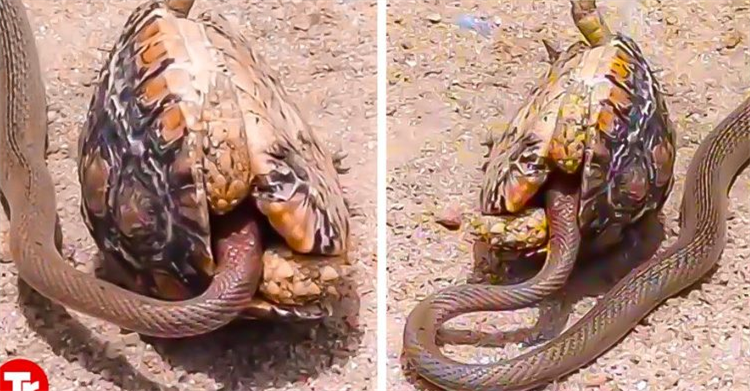
The unusual moment when a 5-meter long common turtle tries to assault it is captured in the video. The turtle was extremely terrified before to the egg attack and quickly pulled its neck within its shell to ensure its own safety.
The fish, angry at being obstructed by the sturdy turtle shell, chose to swim directly in front of the shell in order to attack its prey. But because of this, the snake’s head became stuck within the turtle’s shell.
Turtles are known for having a strong shell that protects them from predators whereas venomous species have the ability to fend off any prey and have few natural enemies. The battle between the aggressive elephant and the turtle is thus analogous to a spear against a shield.
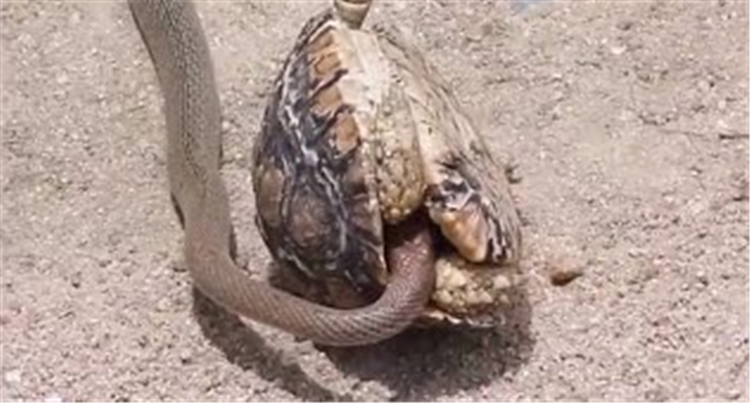
The fact that the head was stuck inside the turtle’s shell caused the snake to suffer pain and agony; despite its best efforts, it was unable to free itself.
The sake took five bites to emerge from the turtle’s shell. It immediately “galloped like a lion,” running away from the scene of my terror. Perhaps as a result of this crime, the people of the Philippines have learned to live lives less dependent on the material world and less “martial” in nature. On the outside, the turtle shell resembles a blast shield; nevertheless, the interior is a collection of ribs and spikes. The thick and robust shell of a turtle deters the majority of predators. As a result, turtles do not
An unbelievable sight that makes many people have to take a different look at turtles, which are known to be gentle, slow, timid creatures!
Turtles are often known in fables as slow, gentle creatures, but you will have to shiver when you see the following scene.
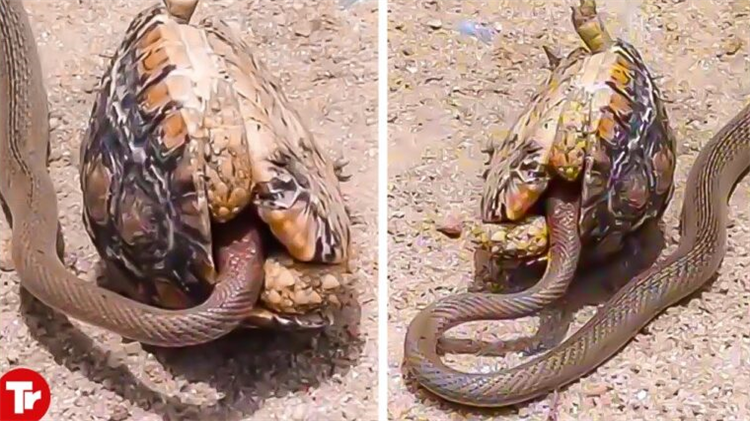
This is a video recording the desperate fight of a water snake (Snake Underwater) when unfortunately entering the territory of the turtle Chelydra serpentina.
Despite possessing the infamous venom of the cobra family, that weapon does not help water snakes against opponents with hard shells, thick skin!
Although it seems slow, but the Chelydra serpentina turtle will kill its prey slowly and painfully, the water snake is almost hopeless only able to raise its head to the surface of the water while the tail has been “crushed” by its sharp jaws. sharp point of the predator.
Finally, the tortoise Chelydra serpentina coldly and ruthlessly dragged the bad guy deep into the cliff to slowly enjoy the fresh meat.
It’s not just the Chelydra serpentina turtle and its fearsome “brother” the alligator tortoise that has such a preference for hunting.
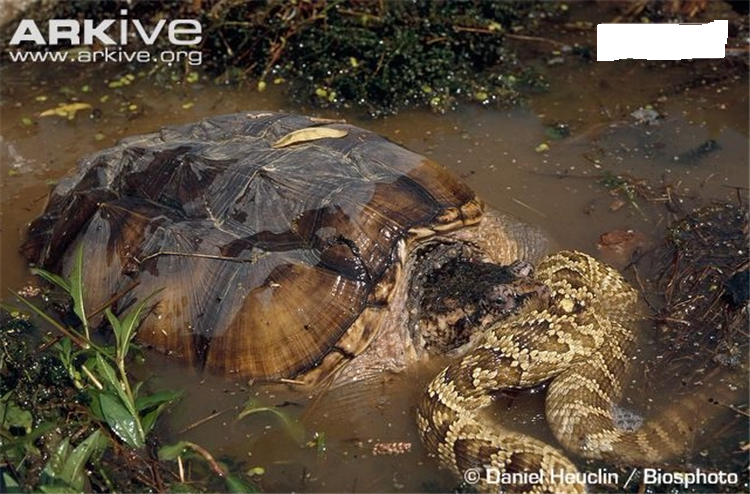
Known as a gentle, slow creature, but the turtle in the video has made us have a completely different view of this species.
Even though he was an assassin on the shore, when the snake was bitten by a turtle in the water, the snake was helpless. It struggled desperately to escape the turtle’s mouth.
However, the more the snake struggled, trying to get to the surface, the more the tail lying in the turtle’s mouth was bitten. The slow-looking, gentle turtle turned out to be quite aggressive when he clutched the snake’s tail, determined not to let go.
The scene of a desert turtle slowly moving with a rattlesnake on its back was recorded by Mario El Pachuco in Arizona, USA, reported by UPI on October 26. This snake belongs to the venomous diamond-scaled rattlesnake species, commonly found in the United States and Mexico.
El Pachuco came across the tortoise while traveling through the area and stopped to take pictures. However, he quickly spotted the snake as he approached. “I started taking pictures and the snake slid down from the turtle’s shell,” El Pachuco said.
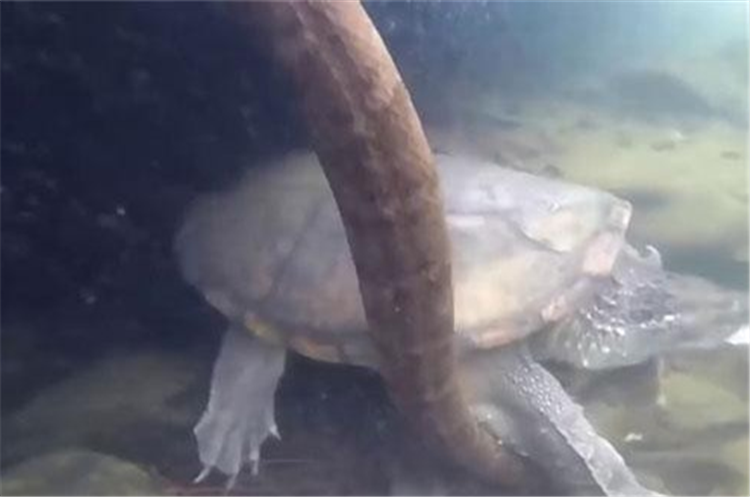
“I don’t know why this tortoise and rattlesnake come together, but I’m happy. It’s not uncommon for rattlesnake and tortoise to live in the same burrow. However, I’ve never seen them together. going out like this. It can be a one-of-a-kind experience,” El Pachuco said.
In the past, we thought turtles lived long because they were slow. However, according to biologist Peter Rogers, such an explanation is still incomplete. Like snakes, turtles live a long life thanks to “heaven-given treasures”.
The giant tortoise Jonathan Seychelles recently turned 190 years old, claiming the title of “Oldest Living Animal on Earth” breaking the record of Tu’i Malila, a tortoise that died in 1965. However, both are in fact “baby” compared to Adwaita, a giant Aldabra tortoise. Based on incompletely recognized 2006 reports, Adwaita was born at the height of the Little Ice Age and died at the age of 255 after a crack in the shell led to an infection.
Turtles aren’t the only cold-blooded animals endowed with an uncanny long lifespan. The tuatara, a lizard-like reptile with a row of spines running down its spine that can live well over a century, and the blind cave salamander, an amphibian with almost translucent skin and very poor eyesight, can live past 70 years.

